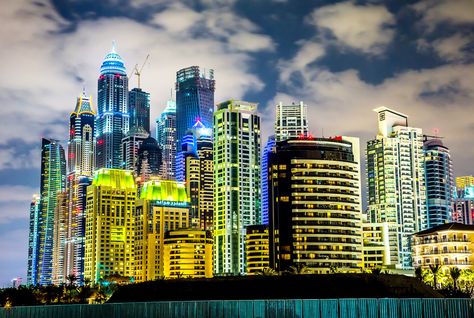New supply and weak demand are putting downward pressure on rentals
Rents in Dubai continued to drop in most Dubai communities in Q1 2017, with apartments in Discovery Gardens and The Views experiencing the steepest drops of seven per cent, followed by The Greens at five per cent, said real estate adviser Core Savills.
“Looking at the rental market, the total pool of tenants has decreased over the last two years due to macroeconomic employment deterrents while new occupier demand has not fully covered the gap. Of this occupier demand, a segment of tenants who could afford to shift to ownership in the backdrop of relatively lower acquisition prices and higher yields, have done so – reducing the existing pool of renters even more. The market continues to bring new supply at an unchanged pace from the past few years, adding downward pressure on rentals,” said David Godchaux, CEO of Core Savills.
On the Palm Jumeirah, villa rents dropped nine per cent, while apartment rents dropped four per cent, as per Core.
According to Cavendish Maxwell, rent declines were more pronounced among studios in DIFC, International City clusters and Dubailand as well as four-bedroom villas in Victory Heights.
“In recent months, tenants have been able to negotiate terms downwards on renewal and the number of landlords offering flexibility to pay annual rent through multiple cheques has increased. Employers are slowly replacing housing allowances with monthly salary components and hence tenants are likely to continue negotiating on both rent as well as multiple cheques,” said Sofia Underabi, head of residential valuation at Cavendish Maxwell.
Most experts forecast a potential increase in rents in 2018 when the employment market picks up bring and brings new occupier demand in the run-up to Expo 2020.
In terms of sales, prime areas continue to lag in performance while low to mid-segment sub-markets are keeping up a steady upward creep. Dubai has seen a contraction in demand from regional and international buyers.
“We witnessed a year-on-year contraction in the total number of investors – notably amplified by non-regional buyers. A strong dollar continues to affect the traditional buyer nationalities such as Indians, British and Pakistanis as their currencies have devalued significantly over the last year. We also saw receding regional demand as GCC investors, although same in number, displayed a 21 per cent drop in total investment amount,” added Godchaux.
However, the Dubai off-plan market has been witnessing a robust performance. Godchaux pointed out: “Off-plan sales are increasingly regaining a foothold, particularly products from reputed developers – although having a detrimental effect on secondary market sales, notably in prime apartment districts. While owners of existing properties try to sell their units, master developers offer products positioned at attractive entry points. With a wider product base, developers can exercise a higher level of price control on the sub-market and largely have an upper hand over individual landlords.”
In the villa sales market, The Springs and The Meadows continue to be the top-performing districts with a five per cent year-on-year rise; while Jumeirah Village was one of the lowest-performing villa districts with a seven per cent year-on-year drop.
Meanwhile, apartments in Dubailand and Jumeirah Village have witnessed stable sales prices as low to mid-income occupiers are willing to trade connectivity for newer, better build and value-for-money products in these fringe areas.
Cedre Villas in Silicon Oasis, apartments in International City clusters, International Media Production Zone and Jumeirah Lakes Towers experienced year-on-year declines of two per cent on an average in Q1 2017, according to Cavendish Maxwell.
In terms of supply, Core Savills estimated 3,100 units were delivered in Q1 2017 while Cavendish said 2,500 residential units have been handed over. Nearly 88 per cent of the units handed over in Q1 were apartments in areas such as Jumeirah Village Circle, Sports City, Silicon Oasis, Dubailand, among others.
This phasing of deliveries has dispelled fears of oversupply. “We anticipate only 15,000 more units to be brought to market until the end of the year; which represents a 50 per cent shortfall from their announced number [36,000]. This large discrepancy between the announced and delivered stock has been a historical trend in Dubai which has helped developers address oversupply concerns by aligning demand and delivering products at realistic prices,” said Godchaux.
“While some projects are delayed as a result of financing issues and extraneous factors impacting the residential market, the majority of delays over the last 12 to 18 months stem from a conscious staggered delivery schedule being set by developers. This acts as a supply control mechanism to align handovers with demand and project sales potential and to avoid flooding the market with units that cannot be absorbed,” said Manika Dhama, senior consultant at Cavendish Maxwell.
For Q2 2017, the majority of agents surveyed by Cavendish Maxwell predicted apartment and villa prices and rents to remain unchanged. In terms of transactions, 64 per cent agents expect new buyer enquiries to increase, while 59 per cent expect an increase in the number of agreed sales.
All rights reserved to the initial publisher for Khaleej Times.
Collected and published by Arms &McGregor International Realty® editorial team. Get in touched with us at [email protected]

